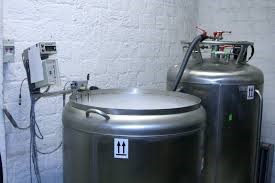Fertility Preservation
 Fertility preservation technologies involve the removal, cryopreservation, and subsequent storage of reproductive materials for future use. Examples of these technologies include: oocyte cryopreservation (egg freezing), sperm cryopreservation, and the freezing of ovarian and testicular tissues. These technologies aim to preserve the future option of having genetically-related offspring.
Fertility preservation technologies involve the removal, cryopreservation, and subsequent storage of reproductive materials for future use. Examples of these technologies include: oocyte cryopreservation (egg freezing), sperm cryopreservation, and the freezing of ovarian and testicular tissues. These technologies aim to preserve the future option of having genetically-related offspring.
In general, there are two primary uses for fertility preservation technologies. First, fertility preservation is used to guard against disease-related infertility. In the cancer context, for example, cancer or cancer therapies can cause future infertility. Second, fertility preservation is used to guard against age-related infertility. For example, a growing number of women are turning to what has been called “social" egg freezing when they anticipate delayed childbearing.
The ethical, legal, and social challenges relating to fertility preservation technologies vary, depending on the type of fertility preservation employed, the individual’s sex, age, health-status, and social contexts in which fertility preservation occurs.
More information on fertility preservation:
Petropanagos, A. (2015). Ethical Analyses of Testicular Tissue Cryopreservation [PDF - 6860 KB]. Poster presentation: 03 Oct 2015, Canadian Fertility & Andrology Society Annual Meeting, Halifax NS.
Petropanagos A, Cattapan A, Baylis F, & Leader A. (2015). Social Egg Freezing: Risks, Benefits, and Other Considerations. Canadian Medical Association Journal, 187(9):666-9. DOI:10.1503/cmaj.141605 (subscription required).
Petropanagos A. (2015). Author interview podcast: should you freeze your fertility? Canadian Medical Association Journal. 13 April 2015.
Petropanagos A. (2014). Should Teen Boys with Cancer Freeze their Sperm? Impact Ethics. 11 Sept 2014.

